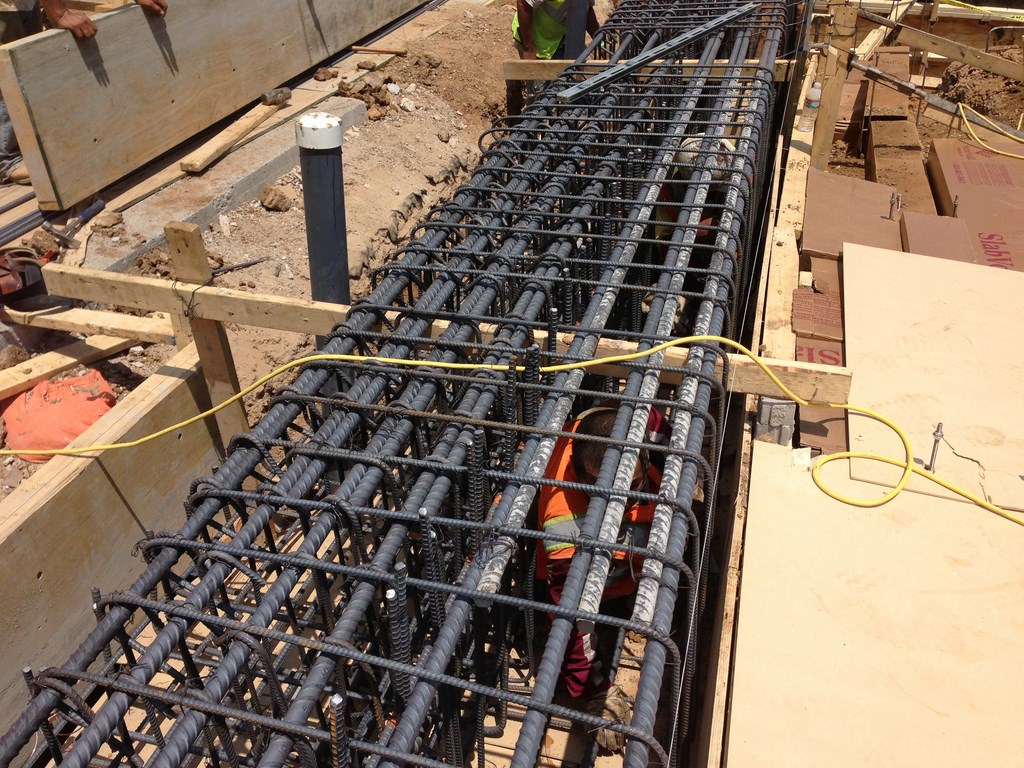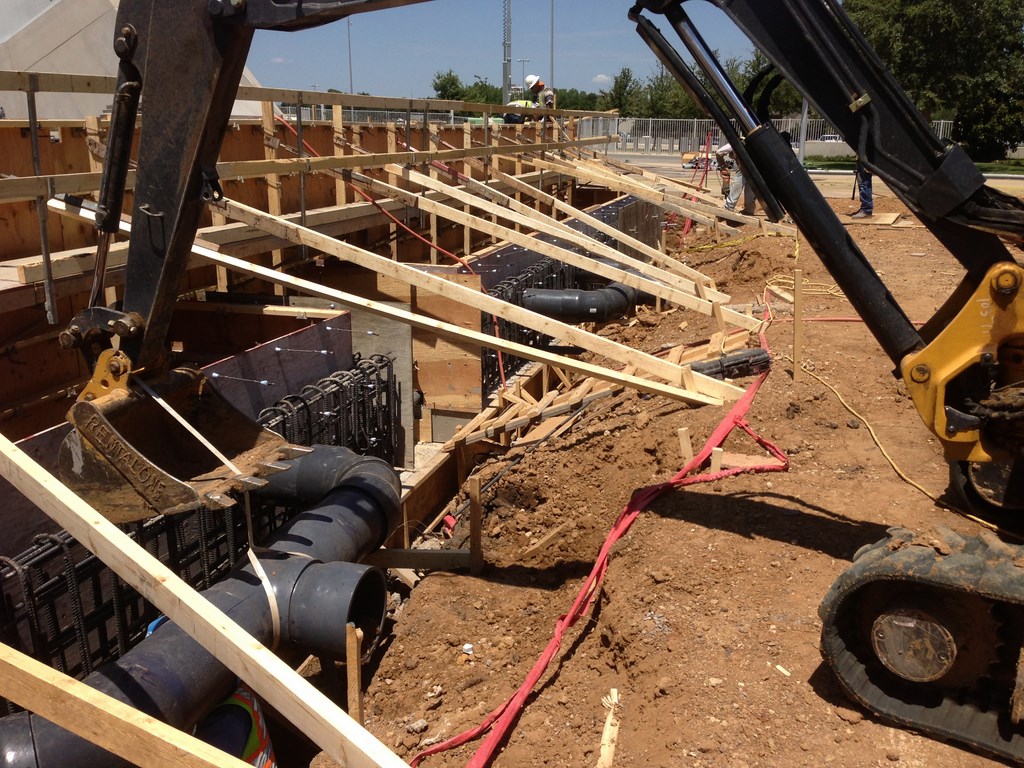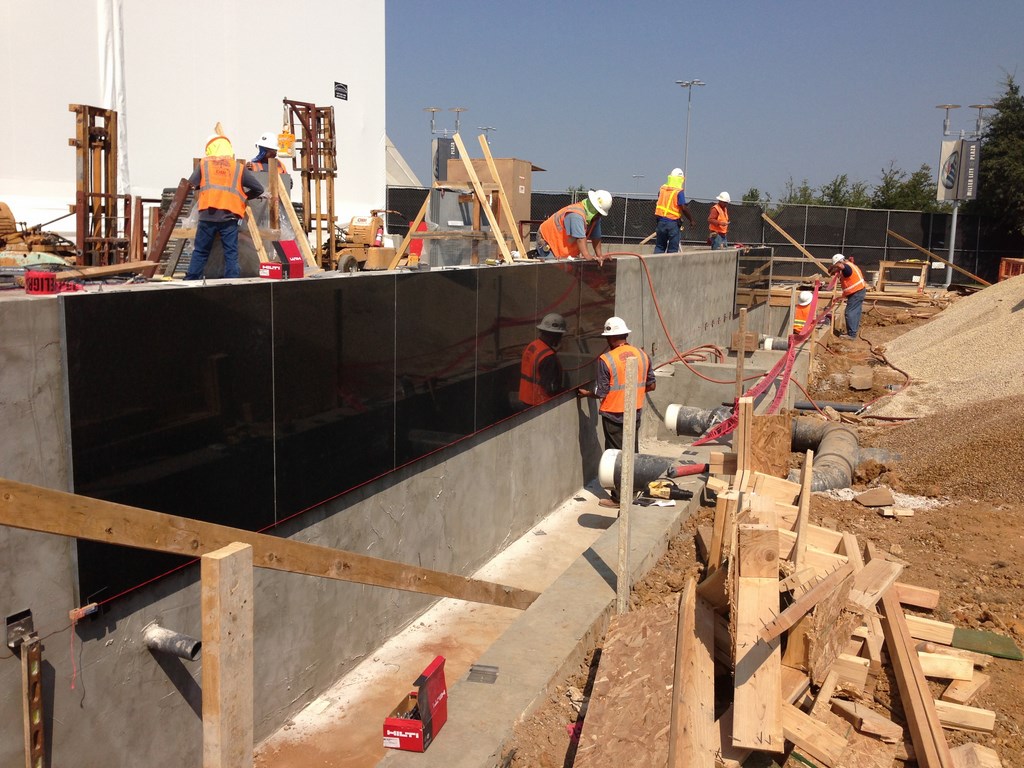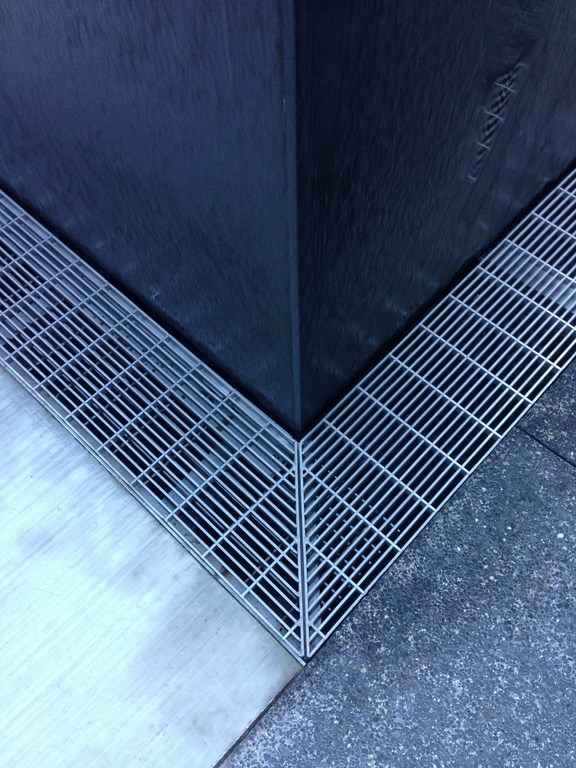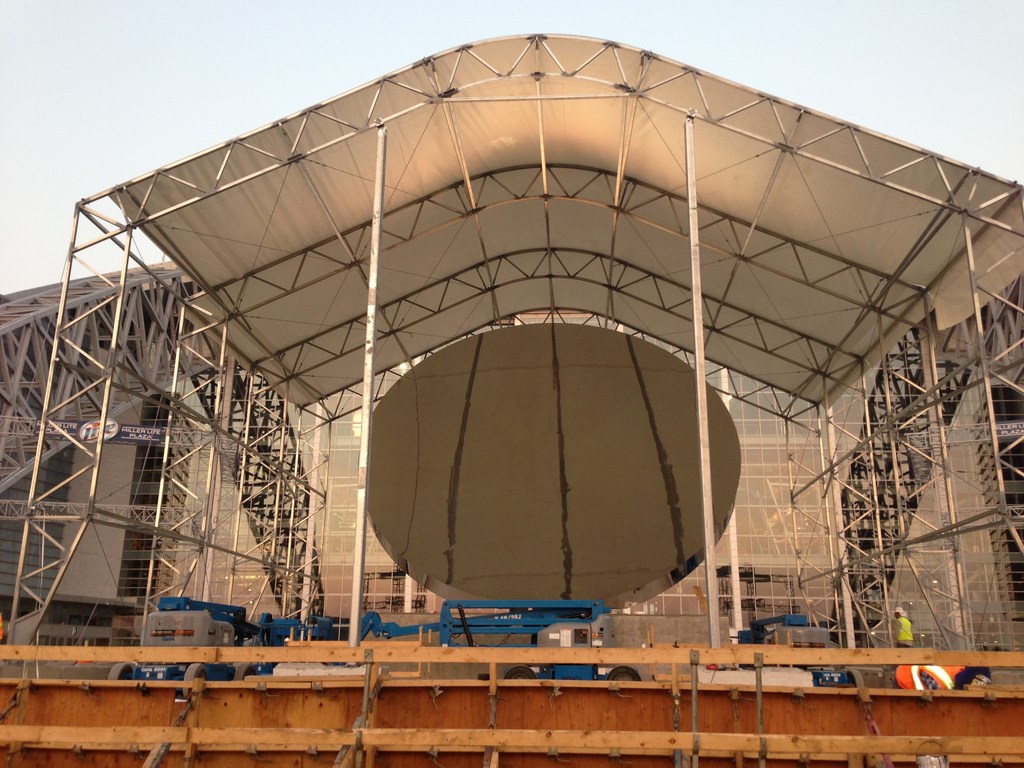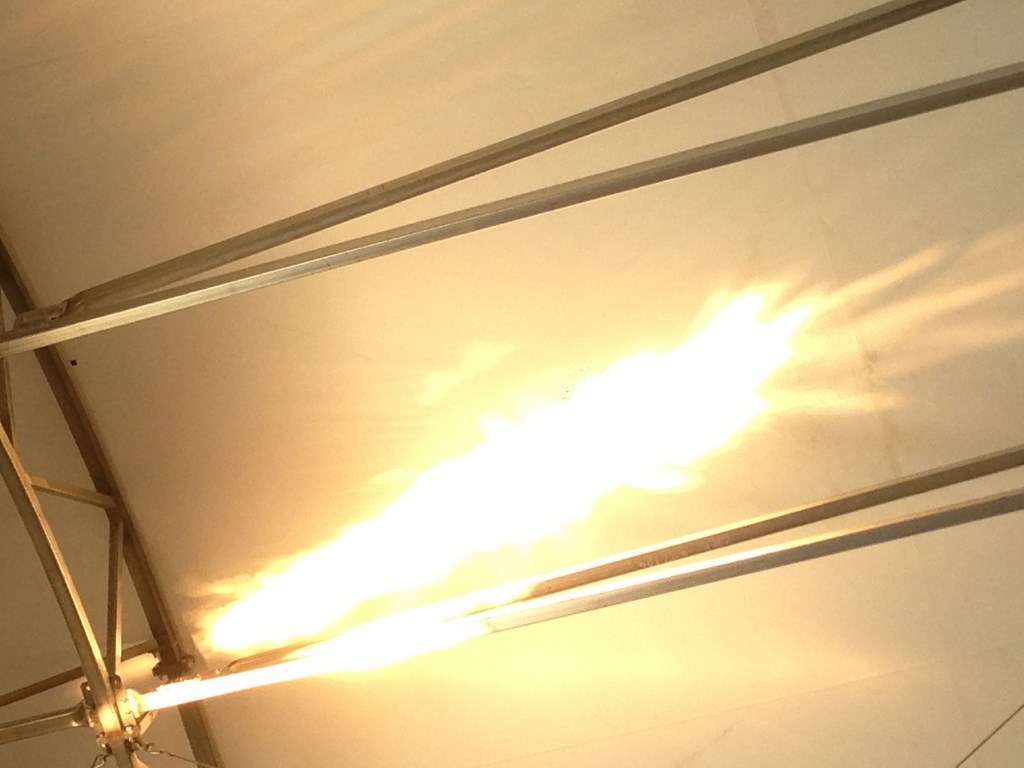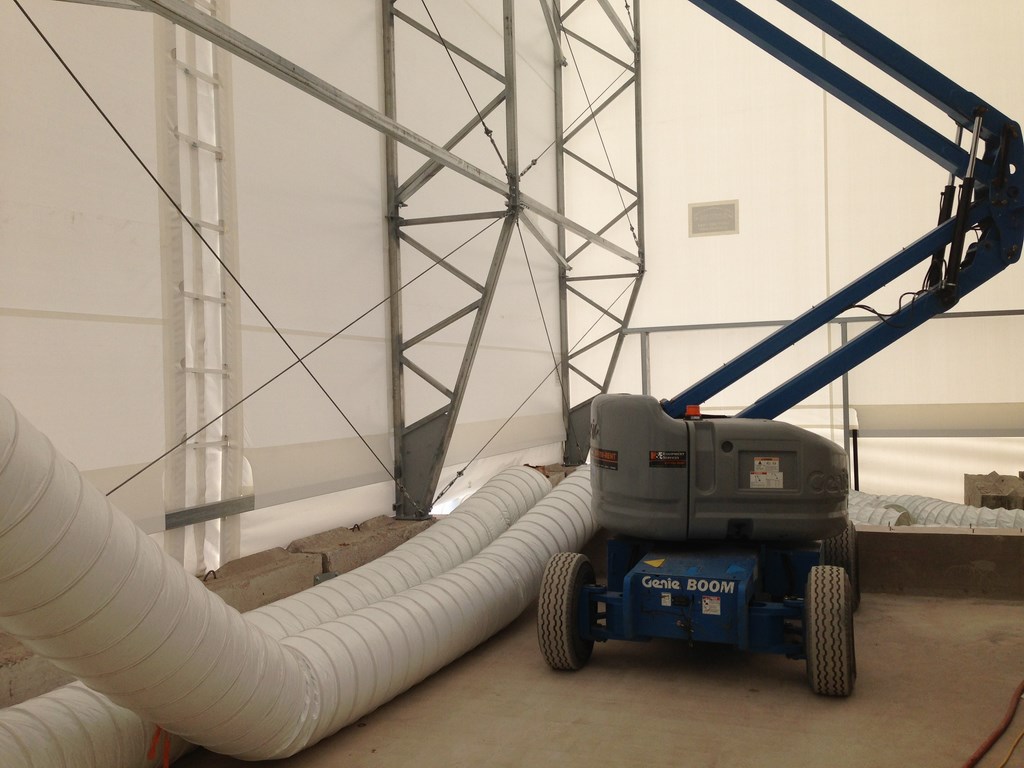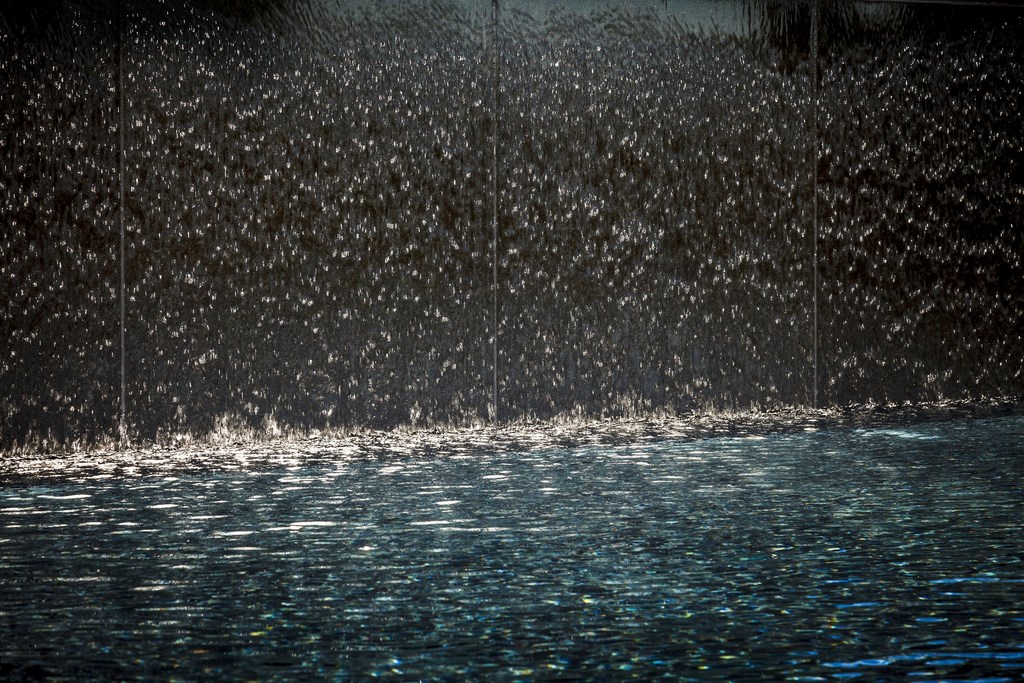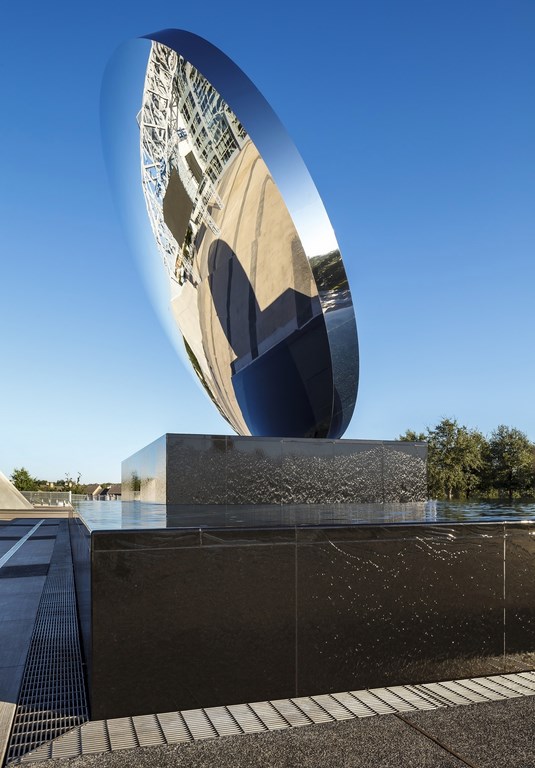Reflective Glory
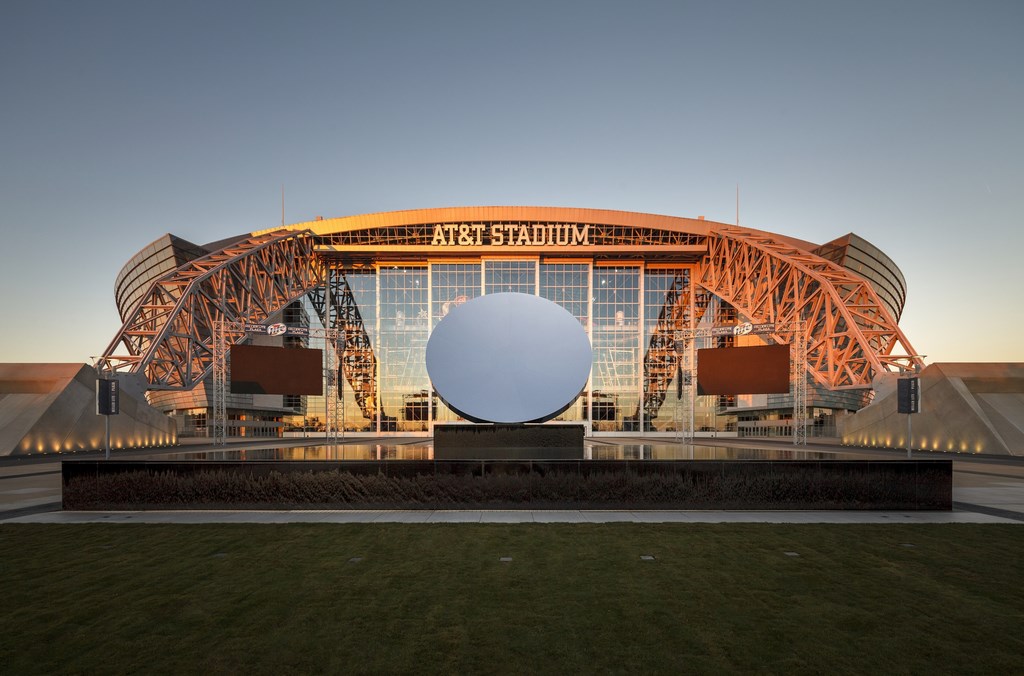
Consider this scenario:
A company you’ve worked with in the past calls your firm in to work on a project. You’re told the setting is magnificent: You’ll be working with a huge sculpture in the most prominent position in front of one of the most renowned sports stadiums on the planet – all of this in a city that prides itself on brilliant architecture.
The job is yours, but here’s the thing: The client is the wife of Jerry Jones, owner of the Dallas Cowboys, and he’s not supposed to know what’s really going on out front of his own stadium until an unveiling ceremony scheduled for his birthday.
And it gets better: The call comes at the end of April and the unveiling ceremony will take place in October. To say it’s a fast-track project would be putting it mildly.
Once the design was finalized, we were to have ten weeks to turn approximately a million and a half pounds of concrete, steel and stone into a working fountain. And along the way, the stadium was to host a range of events – a Monster Truck Jam, a FIFA World Cup Soccer qualifying match, a Professional Bull Riders event and multiple professional football games – each of which would require us to suspend construction and get out of the way.
MAKING READY
The big call came to us from Manhattan Construction Co., a Dallas general-contracting firm that had previously been responsible for building the entirety of AT&T Stadium for the Cowboys. We at Water+Structures had worked with them in the past on a variety of projects, so our capabilities were well known and we had long ago established the kind of inter-organizational rapport that helps projects of this caliber move forward.
| We worked on site at a furious pace, excavating and setting the foundations for the reflecting pools and the massive mirrored sculpture – all while preparing the plumbing and electrical systems to link up smoothly with an equipment vault that was being prepared off site. |
We went through about a month of planning and sorting through design ideas generated by the architects at HKS, another Dallas firm, before ultimately settling on an approach that made the most sense visually and dealt with an unusual (but entirely legitimate) safety concern related to the sculpture Mrs. Jones had purchased for her husband.
Created by Anish Kapoor, an Indian artist who now works from a studio in London, “Sky Mirror” is a brilliantly polished parabolic dish that we were to “float” on a plinth over a highly reflective layer of water. That water-covered plinth was to rise above a larger reflecting pool, and water was to flow over all four sides of both structures. The pools were to be dark to support reflections – black granite veneers on the walls and black quartz finishes inside.
| As the structures began to rise above grade, the enormity of the task started to sink in: We knew we’d have to perform at an extremely high level to align our work with the refined aesthetics of the sculpture as we set its base, wrapped our basins in stone and made even the grates into something special. |
The safety issue we had to weigh extended from the fact that, when hit by sunlight, the mirror collected a lot of energy and released as a softly focused heat beam that would have been problematic if one of the original design ideas (that is, a large expanse of lawn surrounding the sculpture) had been pursued.
The pools thus served three purposes: The reflective surfaces would set the sculpture off beautifully; the thermal energy would easily be absorbed within the large volume of constantly moving water; and the structures would be imposing enough that pedestrians couldn’t get close to the sculpture and put themselves at any risk.
Looking back, it was a lot to consider under any circumstances, but on the fly?
DIGGING IN
Once the design team settled on a course of action, things began moving rapidly. As Jon Mitovich reports in his part of this story (click here), we brought in Roman Fountains (Albuquerque, N.M.) and relied on them to assemble the systems we needed to drive the planned perimeter-overflow effects.
On site, work began in earnest in July, with excavation work on the pools up first. Next, we poured both the large basin as well as the upper, smaller basin, which had been engineered to double as the plinth on which the sculpture was to be mounted. This was all done in close coordination with Roman Fountains, which was specifying all of the electrical and hydraulic connections that would ultimately run from the pools to the equipment vault.
| Once the sculpture’s platform was set, the process of installing the Sky Mirror itself started in earnest. Great care went into moving its base into position – and the desire to avoid any missteps, dings or damage of any kind only grew as the big pie slices were moved into place one by one. |
When the vault arrived early in September, we dug up the fire-access road alongside the basins and prepared the way for its preassembled circulation, filtration and control systems. In just 11 days, we removed the road surface, excavated the space for the vault, craned it into position, made all of the connections needed to drive the system – then buried everything and returned the road to operational status.
By this time, the sculpture had arrived as 15 big pieces that were to be assembled and polished on site. As soon as the plinth was ready, we tented the work area and did what we could to conceal our activity from curious eyes. (We also did this because we didn’t want to have to deal with the heat that would be generated if the late-summer sun grazed the mirror’s surface.)
| Tenting the sculpture served two purposes: It helped preserve the element of surprise we’d tried to maintain from the start of the project, but it also protected those working on preparing and polishing the mirror from being injured by the heat energy collected by the mirror’s concave surface and focused as an uncomfortably warm beam of light. To keep things workably cool in a Texas summer, the entire structure was air-conditioned. |
Simultaneously, we applied the various finishes to the pools. The top basin was to flow over on all four sides into the large bottom basin. The large basin’s water rolled over all four sides, too, but into a grated trough system that embraced three of the sides and moved the water by gravity to a basin hidden beneath the fourth.
We finished all of this work about a week before the unveiling ceremony, which gave us ample time to work with the systems and fine-tune their operation in accordance with the facility managers’ desires. By the end of that week, the water was crystal clear and moving flawlessly over the edges.
COLLECTIVE EFFORT
Working through a project of this complexity with absolutely no time to spare (or any margin for error) is an ongoing test of organizational flexibility – and a true challenge to the ability of every entity involved to communicate fully and clearly. We facilitated this on all sides by holding daily meetings at which we dealt with specific goals for that day and the next.
| The drama of the newly defined path to the front of the stadium made all the effort worthwhile, with the composition revealing its nature by stages as you take in the grandeur of its multiple reflections. As you come close, you see the sky reflected off the sculpture, then see a simulation of the mirror in the water’s smooth surface before you perceive the flow dancing over the edges. As you walk by, the reflections come back down to earth – and it’s time find your seat! |
Any project of this magnitude involves a mountain of variables, and we knew that glitches would creep in and cause us headaches as we tried to stay on track. In some cases, minor issues would knock us sideways, but given the overall deadline, we couldn’t let those difficulties get us down. While we can confidently say that everything did go smoothly, it must also be said that this involved more than a few 18-hour days along the way.
|
A Longer Handoff Although everything was complete and ready to go by the time Cowboys owner Jerry Jones’ very public birthday celebration took place, it would be an exaggeration to say our work on site was done on that day. As Jon Mitovich mentions in his article, for example, the vault-contained control system needed to be upgraded after commissioning in such a way that the facility managers could run, control and adjust its operation remotely, from inside the stadium’s control room. In the weeks that followed, we at Water+Structures did some fine tuning as well, working with facility staff to get the water flowing exactly the way they wanted it and then helping them learn how to keep it that way. We also pitched in beyond the watershapes, helping in adjusting the nearby tree lighting so it fit perfectly within the new visual context. At this point, half a year removed from the all-consuming rush, we still visit the site on a regular basis. The advantage now is that, although the work is still demanding, the pace is slower and, thank goodness, there’s no longer any need to keep things secret! — B.W. & E.C. |
Of course, our ability to work within a larger team, under great pressure, was why we were called to the project in the first place. From the general contractor’s perspective, our firm was a known quantity – and the same was true of all the contractors we engaged to pull our part of the process together.
That’s not to say we were just spokes in a well-oiled wheel: Our role from the start required us to take a design that looked fine on paper at the macro scale and make it into something that functioned flawlessly and looked even better down to the micro scale, from the precise way the water flowed over the edges to the decorative details of the grate system that surrounds the large pool.
It was on us to have everything ready on every conceivable level by the time Jerry Jones’ birthday rolled around on October 13. When his wife unveiled the gift we’d gone to such pains to keep secret for so long, we realized that we’d made true beauty possible – and even had a little time to spare.
Bryan Weber is founder and president of Water+Structures, a fountain contractor based in North Richland Hills, Texas. He established the company in 1997 to serve the Dallas/Fort Worth area’s needs with fountains, swimming pools and other water features, including baptismal fonts. Eric Cooper is Senior Project Supervisor/Manager at Water+Structures. He joined the firm in mid 2013 and specializes in construction supervision and management. They both may be reached through www.waterstructures.net.














